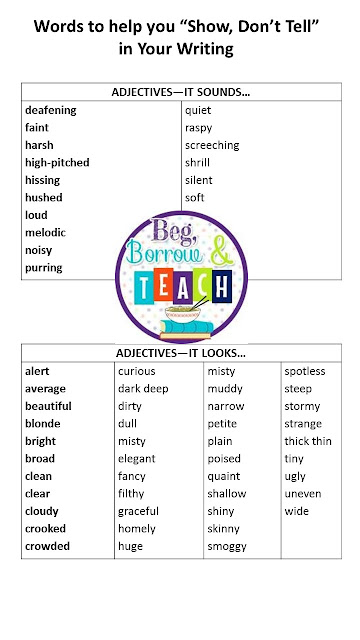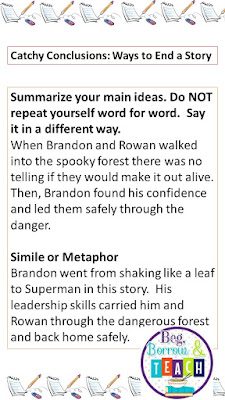I like to print and laminate all the
pages. I hole-punch them and use binder
rings through the holes to hold all the pages together. Another
option is to put all the
pages in sheet protectors and use the rings to hold them together (see the picture below). I like to have one Editing-Revising
Packet for each student to keep at their desk for reference when they are
writing.
The Bold Beginnings piece of the packet is a natural
place to start. This is a sample of my larger Bold Beginnings and Catchy Conclusions packet.
After students have written a good, solid opening/hook, it's time to think about how to "Show, Don't Tell" with their writing. In other words, painting a mental picture of their writing topic. A great way to do this is with adjectives. I've included adjective lists for the senses: Sound, sight, taste, and touch.
After students have written a good, solid opening/hook, it's time to think about how to "Show, Don't Tell" with their writing. In other words, painting a mental picture of their writing topic. A great way to do this is with adjectives. I've included adjective lists for the senses: Sound, sight, taste, and touch.
After writing the middle of the piece,
it’s on to the catchy conclusion. I’ve
included examples for the following ways to conclude a piece of writing:
Summary, simile/metaphor, quotes.
Once the rough draft has been written,
students are asked to edit and revise their work. I ask my students to edit their own work and
at least one of their peer’s. For this
purpose, I’ve included a list of rules for Buddy Editing and an Editing
Checklist.
If you'd like to pick up a copy, click here.
Do you have any ways that make editing and revising easier for your students? I'd love to hear about them!







No comments:
Post a Comment